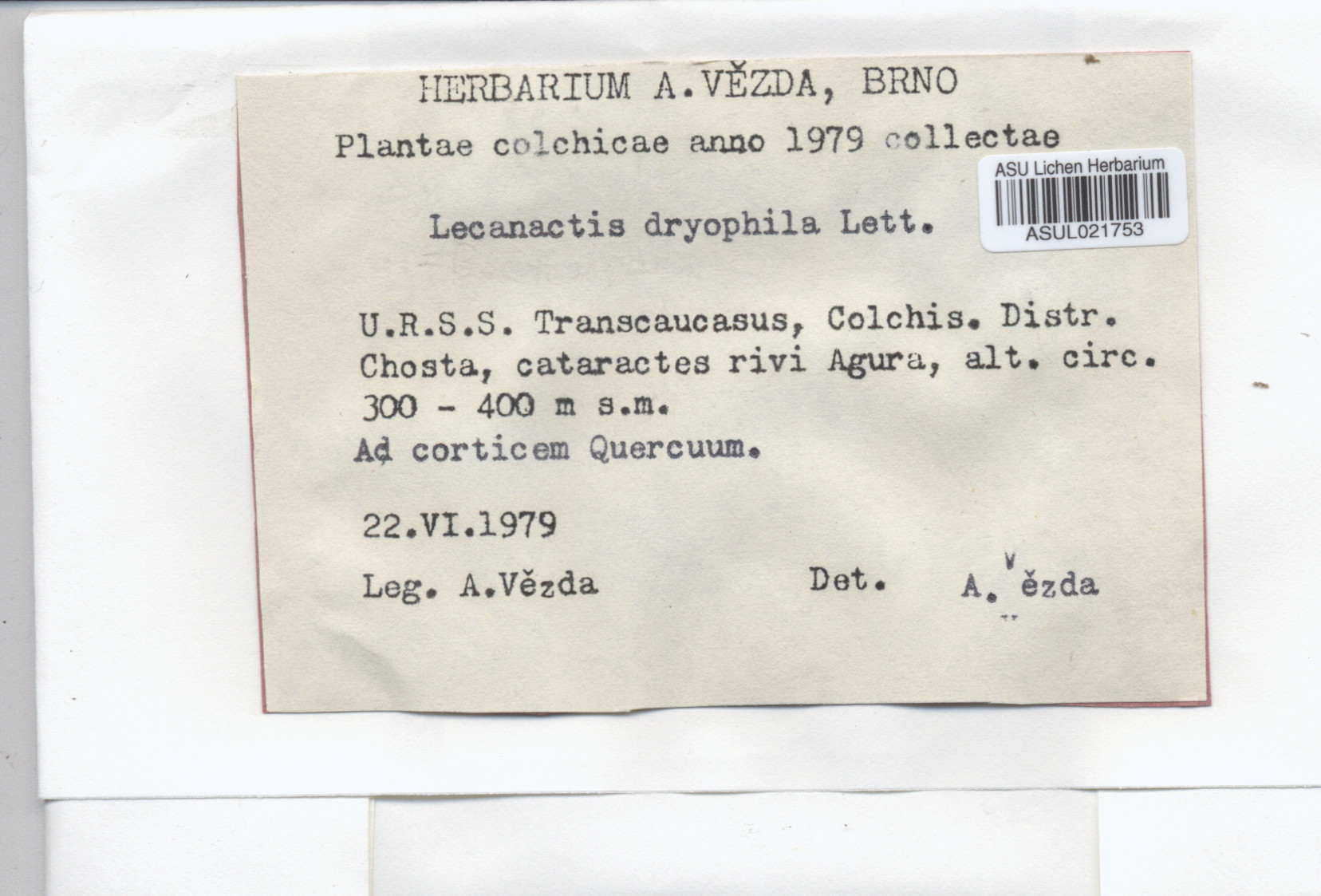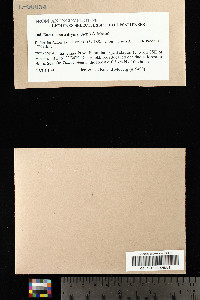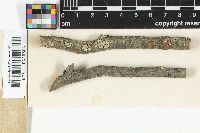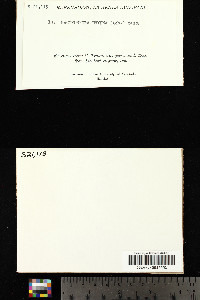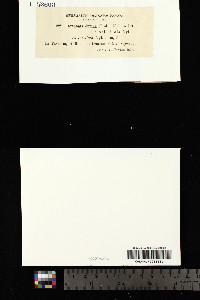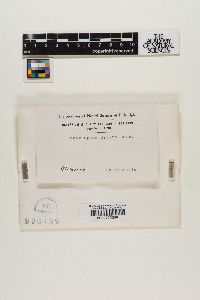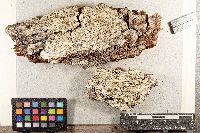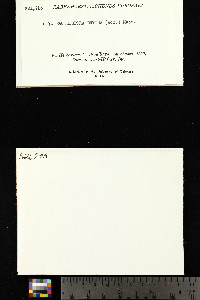
Consortium of Lichen Herbaria
- building a Global Consortium of Bryophytes and Lichens as keystones of cryptobiotic communities -
- Home
- Search
- Images
- Species Checklists
- US States: O-Z >
- US National Parks
- Central America
- South America
- US National Parks
- Southern Subpolar Region
|
|
|
|
Family: Arthoniales_family_incertae_sedis
[Arthonia dryina (Ach.) Jatta, moreBacidia dryina (Ach.) Fink, Biatora dryina (Ach.) A. Massal., Coniocarpon dryinum (Ach.) Rabenh., Lecanactis dryina (Ach.) Lettau, Lecanactis dryina subsp. dryina (Ach.) Lettau, Lecanactis dryophila Lettau, Lecidea dryina (Ach.) Ach., Lichen dryinus Ach., Melaspilea patersonii Stirt., Raphiospora dryina (Ach.) Arnold] |
Nash, T.H., Ryan, B.D., Gries, C., Bungartz, F., (eds.) 2004. Lichen Flora of the Greater Sonoran Desert Region. Vol 2. Thallus: continuous or slightly cracked to areolate, effuse, thin, mostly epiphloeodal surface: white to grayish white anatomy: up to 80 thick, without a differentiated medulla, I+ pale red or blue, K/I+ deep blue Ascomata: black, scattered, adnate to sessile with +constricted base, +round to often somewhat irregular in outline, often oval or sublobulate, +immarginate, +shining, 0.2-0.7 mm in diam., disc: black, plane then convex, uneven, epruinose exciple: laterally well-developed, dark red-brown, closed below the subhymenium or rarely open, up to 40 µm wide at the top and 125 µm wide at the base, I+ reddish, K/I+ deep blue pseudoepithecium: dark brown, reticulate hymenium: hyaline, 75-110 µm tall, I+ pale red or blue in the inner part, K/I+ pale blue; paraphysoids: with apical cells not thickened, richly branched and anastomosing subhymenium: pale to dark brown, variously developed, up to c. 150 µm thick, I+ reddish or blue, K/I+ deep blue asci: narrowly clavate, broadest near apex, 70-100 x 11-13 µm ascospores: hyaline, +acicular, Dryina-type, 70-77 x (1-)2-3 µm, but +inclined to completely fragment into individual cylindrical part-spores; part-spores: notably rectangular or cuboid, (2-)3-8 µm long Pycnidia: immersed or semi-immersed in the thallus, punctiform, globose or subglobose, up to c. 150 µm tall and 140 µm wide; wall: apically brown, hyaline to pale brown basally conidia: straight, 3-5 x 1-1.5 µm Spot tests: all negative Secondary metabolites: none detected. Substrate and ecology: on bark, especially of oaks, in the coastal hills to submontane belt World distribution: Europe, Asia and North America Sonoran distribution: southern California. |
Powered by Symbiota

